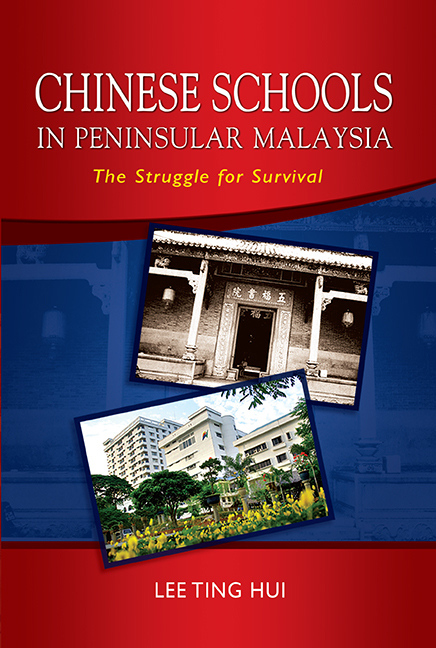Book contents
- Frontmatter
- Contents
- Acknowledgements
- Abbreviations
- Notes on Coverage and Names
- Introduction
- 1 The Years before the Pacific War
- 2 From the Japanese Occupation to Self-Government
- 3 Towards the “Ultimate Objective” of One-medium Education
- 4 One-medium Education under Rukun Negara and the New Economic Policy
- 5 The 1980s: A Decade of Continuing Challenges for the Chinese Schools
- 6 Vision 2020 and the Chinese Schools
- 7 Conclusion: Challenges and Responses
- Glossary
- Bibliography
- Index
- About the Author
3 - Towards the “Ultimate Objective” of One-medium Education
Published online by Cambridge University Press: 21 October 2015
- Frontmatter
- Contents
- Acknowledgements
- Abbreviations
- Notes on Coverage and Names
- Introduction
- 1 The Years before the Pacific War
- 2 From the Japanese Occupation to Self-Government
- 3 Towards the “Ultimate Objective” of One-medium Education
- 4 One-medium Education under Rukun Negara and the New Economic Policy
- 5 The 1980s: A Decade of Continuing Challenges for the Chinese Schools
- 6 Vision 2020 and the Chinese Schools
- 7 Conclusion: Challenges and Responses
- Glossary
- Bibliography
- Index
- About the Author
Summary
The self-government granted by the British to the Alliance Party in 1955 was returning partial power to the local people of the country. This was followed two years later by the British relinquishing power altogether and Malaya becoming independent.
As to be expected, the political changes, like in previous times, had ramifications in the educational field. The Alliance Party was led by UMNO, a Malay organization. With power in its hands, UMNO aspired and took steps to pursue an “ultimate objective” in education, which was to use the Malay language as the main medium of instruction in all schools. This objective still holds today. The objective was called ultimate because UMNO realized, for various reasons, that this could not be achieved overnight. It was ready to accommodate these various reasons and aimed to reach the objective only ultimately.
This chapter will attempt to chart the course which UMNO pursued to achieve its goal, as this impacted on Chinese education from the year 1955, when self-government was realized, to 1969, which was a turning point in the history of the country after which there were momentous changes again in the field of education. The Alliance Party was able to wrest self-government at first, and finally, even independence from the British because its component parties, UMNO, the MCA, and MIC, could reach a compromise amongst themselves on what should be the respective status of the Malay, Chinese, and Indian races in a new country. The understanding worked well for many years, but by 1969 each community had become dissatisfied with what the others were enjoying and an explosion occurred. Racial riots broke out.
TOWARDS INDEPENDENCE
Between 1955 and 1957, the Alliance Party led by Tunku Abdul Rahman, negotiated with the British for independence. The talks were successful and the country became independent on 31 August 1957, with the Tunku as the prime minister.
- Type
- Chapter
- Information
- Chinese Schools in Peninsular MalaysiaThe Struggle for Survival, pp. 83 - 117Publisher: ISEAS–Yusof Ishak InstitutePrint publication year: 2011

